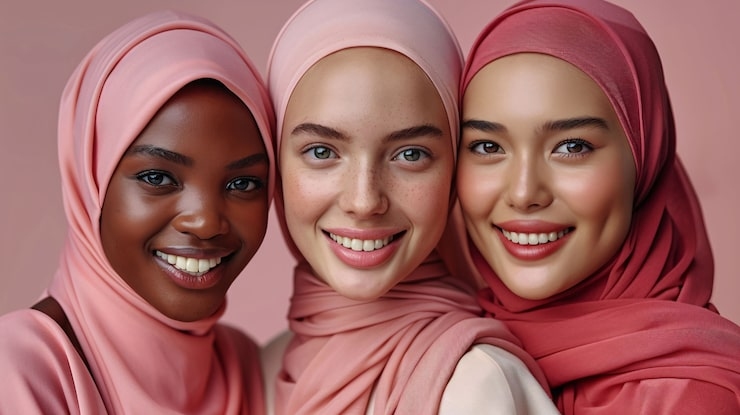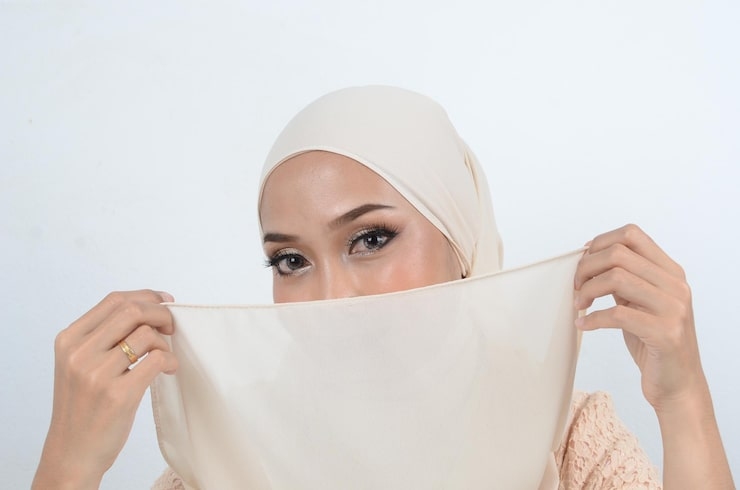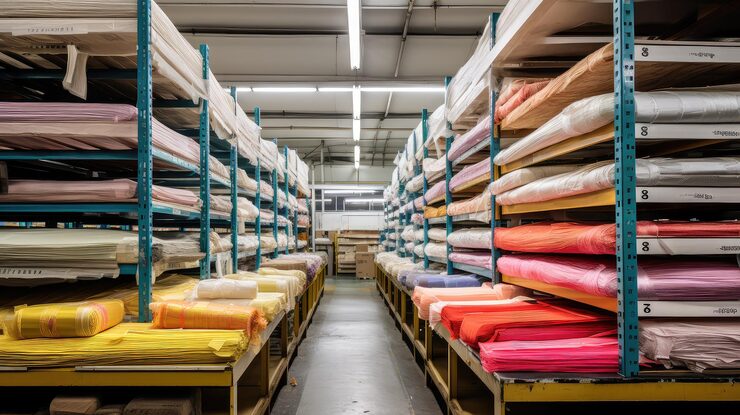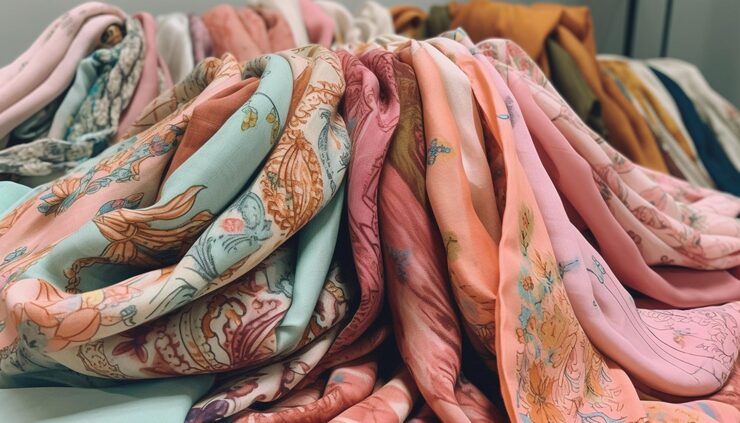Classification of Muslim headscarves and introduction to the world's most expensive Tudung
Views :
Update time : 2024-10-11
Classification of Muslim headscarves and introduction to the world's most expensive Tudung
The headscarf traditionally worn by Muslim women, called "Hijab" or "Tudung", not only symbolizes humility and respect, but also carries religious and cultural significance. Over time, the styles, materials and designs of headscarves have also evolved, retaining traditions while incorporating modern fashion elements. Globally, there are many types of headscarves worn by Muslim women, with a wide range of prices. Some Tudungs are even known as the most expensive headscarves in the world for their unique designs and rare materials.
Main classification of Muslim headscarves
In the global Muslim community, there are many types of female headscarves, and the specific styles and wearing methods are often closely related to regional culture, religious beliefs and personal style. The following are several common types of headscarves:
1. Hijab
The Hijab is the most common headscarf for Muslim women, mainly used to cover the hair, ears and neck, leaving only the face exposed. It is not just for covering, but also a symbol of respect for religious teachings. Hijab has a variety of styles, ranging from simple cotton to gorgeous silk, with rich colors and patterns to meet the needs of different occasions. In some countries, women must wear a hijab when they go out.
The Hijab is the most common headscarf for Muslim women, mainly used to cover the hair, ears and neck, leaving only the face exposed. It is not just for covering, but also a symbol of respect for religious teachings. Hijab has a variety of styles, ranging from simple cotton to gorgeous silk, with rich colors and patterns to meet the needs of different occasions. In some countries, women must wear a hijab when they go out.
2. Niqab
The niqab is a more tightly covered headscarf, usually only showing the eyes and covering all other parts. This headscarf is more common in Saudi Arabia, Yemen and other places. The niqab not only covers the hair and neck, but also the entire face, but different regions and cultures have different requirements for the design and wearing of the niqab.
The niqab is a more tightly covered headscarf, usually only showing the eyes and covering all other parts. This headscarf is more common in Saudi Arabia, Yemen and other places. The niqab not only covers the hair and neck, but also the entire face, but different regions and cultures have different requirements for the design and wearing of the niqab.
3. Burqa
The burqa is one of the most covering Muslim women's clothing. It covers the whole body, including a gauze or transparent cloth around the eyes to cover the vision. This headscarf is most common in Afghanistan and other regions. The religious meaning of the burqa is relatively strong, symbolizing extreme modesty and privacy.
The burqa is one of the most covering Muslim women's clothing. It covers the whole body, including a gauze or transparent cloth around the eyes to cover the vision. This headscarf is most common in Afghanistan and other regions. The religious meaning of the burqa is relatively strong, symbolizing extreme modesty and privacy.
4. Shayla
The shayla is a rectangular headscarf, mainly popular in the Gulf region. It is usually wrapped loosely on the head and shows a certain sense of fashion with modern clothing. The design of the shayla is relatively flexible, and many young Muslim women choose this headscarf as a modern Muslim outfit.
The shayla is a rectangular headscarf, mainly popular in the Gulf region. It is usually wrapped loosely on the head and shows a certain sense of fashion with modern clothing. The design of the shayla is relatively flexible, and many young Muslim women choose this headscarf as a modern Muslim outfit.
5. Al-Amira
Al-Amira consists of two parts: a tight-fitting hat and a loose scarf. This headscarf is easy to wear and is usually made of cotton or polyester materials, which is both comfortable and practical. It is especially common in Muslim communities in Southeast Asia.
Al-Amira consists of two parts: a tight-fitting hat and a loose scarf. This headscarf is easy to wear and is usually made of cotton or polyester materials, which is both comfortable and practical. It is especially common in Muslim communities in Southeast Asia.
6. Chador
Chador is mainly popular among Muslim women in Iran. It is a cloak that covers from the top of the head to the ankles, usually only revealing the face, without using any fixings. Chador embodies the combination of Iranian culture and Islam and has a strong traditional significance.
Chador is mainly popular among Muslim women in Iran. It is a cloak that covers from the top of the head to the ankles, usually only revealing the face, without using any fixings. Chador embodies the combination of Iranian culture and Islam and has a strong traditional significance.
7. Tudung
Tudung is a headscarf commonly worn by Muslim women in Southeast Asian countries (especially Malaysia, Singapore, Indonesia, etc.). Similar to Hijab, Tudung usually covers the head, ears and neck, but its design is more simple and is often combined with school uniforms, workplace clothing, etc. Tudung is not only a symbol of Muslim faith, but also a way to express personality and fashion.
Tudung is a headscarf commonly worn by Muslim women in Southeast Asian countries (especially Malaysia, Singapore, Indonesia, etc.). Similar to Hijab, Tudung usually covers the head, ears and neck, but its design is more simple and is often combined with school uniforms, workplace clothing, etc. Tudung is not only a symbol of Muslim faith, but also a way to express personality and fashion.
What is the most expensive Tudung in the world?
With the development of the global fashion industry, headscarves are not only a religious symbol, but also a cultural trend. Many brands and designers incorporate luxurious fabrics and exquisite craftsmanship into the design of Tudung, making it a darling of the fashion industry. So, what is the most expensive Tudung in the world?
The most expensive Tudung in the world comes from the Malaysian luxury brand Bawal Exclusive. This headscarf called "Bawal Exclusive Swarovski" costs up to 500,000 Malaysian ringgit (about 120,000 US dollars). This Tudung is famous for its luxurious crystal decoration and is carefully handmade by designers. Our company provides raw materials to them through traders.
Summary
The headscarf of Muslim women is not only a manifestation of religious beliefs, but also a symbol of the fusion of culture and fashion. Whether it is the Hijab worn daily, the Niqab symbolizing privacy, or the Tudung popular in Southeast Asia, each headscarf has its unique meaning and style.
For more than 20 years, our company has been committed to developing and producing high-quality hijabs and tudungs, and has established a good reputation and quality assurance system in Southeast Asia. Contact us now and let us help you grow your brand value.
For more than 20 years, our company has been committed to developing and producing high-quality hijabs and tudungs, and has established a good reputation and quality assurance system in Southeast Asia. Contact us now and let us help you grow your brand value.




